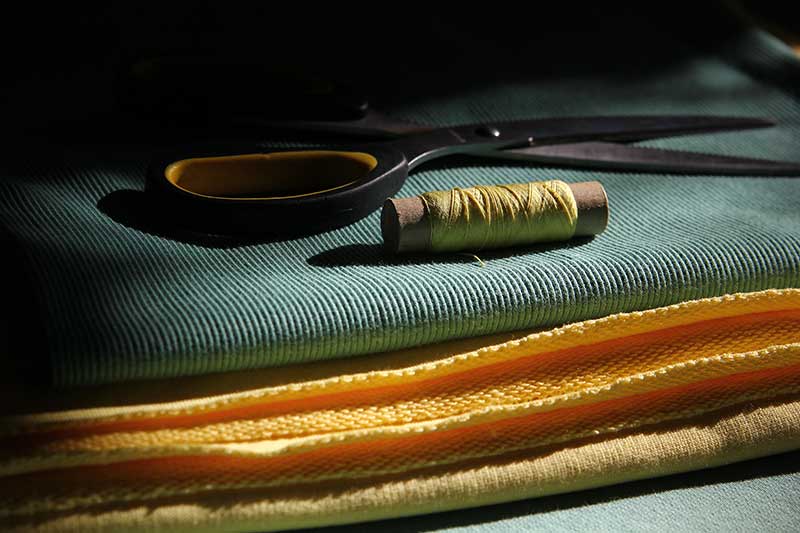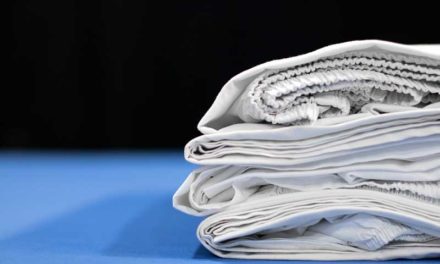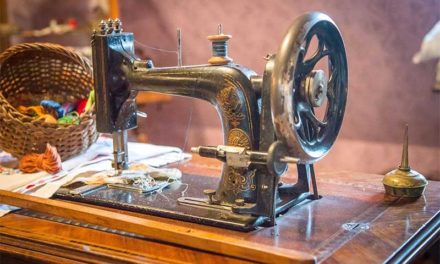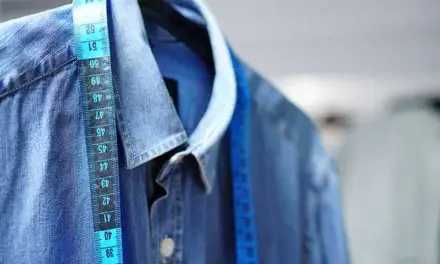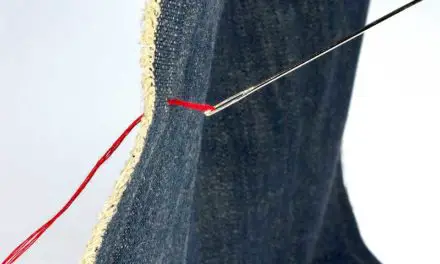Fleece is a stretchable fabric used for a variety of garments, from hats and socks to jackets and pants. It’s a more affordable and warmer wool alternative that’s machine washable and wrinkle-free. Fleece is easy to work with, and in this article, we’ll cover everything you need to know before starting a sewing project.
Table of Contents
Types Of Fleece
There’s a general misconception that fleece is just a polyester fabric. In reality, fleece fabric is made in a specific way, not by a specific component. The fibers are knit into a light fabric, which is then brushed on one side. That way, fibers are loosened and they create a soft napped surface.
Fleece can be made of either natural or synthetic material. Polyester fleece is a popular choice of material for different types of garments. It’s great for winter and athletic apparel, as it keeps the moisture away from the body while allowing air circulation. It also increases the temperature of the body as it adheres to the skin.
Cotton or cotton-blended fleece is more breathable but less warm than polyester fleece. It’s also not as stretchy, and it’s commonly used for sweatshirts and sweatpants.
Preparing The Fabric
Some fleece may shrink or fade after washing. This is especially true with cotton fleece. That’s why you should always wash it before you start working on your sewing project.
The next thing you should do is choose a pattern. Pick something simple, as fleece doesn’t come out well on complicated pieces.
With fleece, it’s important to identify the right and wrong side. The former is more durable, so it should always face outwards. Most types of fleece have a lumpy right side, while the wrong side is more smooth. However, sometimes telling the sides apart by looking at them can be difficult.
Luckily, there’s a simple method that can help you differentiate the right and wrong side of the fleece. Hold the fabric with both hands and stretch it out slightly. The cut edge will always bend to the wrong side.
Make sure to always use sharp scissors when cutting fleece. This fabric is very thick, and blunt scissors would blur the edges. Another thing you should pay attention to when cutting fleece is the nap direction. To determine which way the nap goes, stroke it with your hand. If the nap is going downward, it will appear smooth. Always keep the nap in one direction when sewing pieces together.
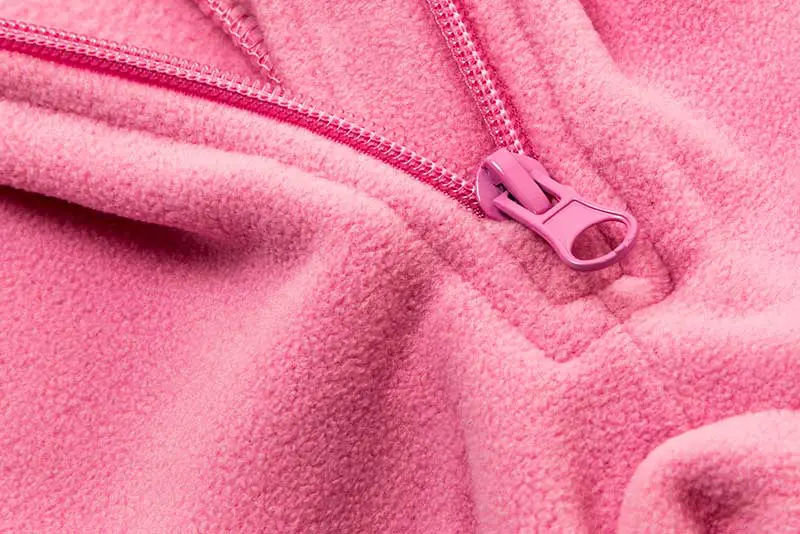
Sewing Fleece
Let’s talk about the tools needed for sewing fleece. Generally, you want to match the fabric and the thread. If you’re working with polyester fabric, it’s advisable to pick a polyester thread. That way, both thread and fabric are equally durable and have the same care requirements.
Fleece is hard on the needles, so you should always opt for a high-quality one. Universal needles are fine, but microtex and ballpoint are even better. The tips on these types of needles are round, and they push the fibers aside, instead of piercing them. Of course, you also need to match the needle size to the thickness of the fabric. Sizes 70/10 and 75/11 are good for lightweight fleece, while 80/12 is a standard option that will work for medium-weight fabric. For thick fleece and bulky layers, go with 90/14.
Since fleece is a very stretchy material, you need to use adequate stitching. On a curved neckline, a V-neck, armholes or other areas at risk from stretching out, go for stay stitching. This type of stitching holds these curved edges in place. One thing to keep in mind is that you need to stay stitch as soon as you cut the fabric. Otherwise, the curves might stretch out.
For edges, use a zigzag stitch. This type of stitch is great for areas with more movement, as it doesn’t break when you stretch it. Serged edges are also great as they reduce the bulk.
Zippers are usually used on fleece jackets and hoodies. If you’re creating a sporty garment, zippers are a cool detail, but keep in mind that it’s not easily installed. To prevent the fleece from stretching around the zipper, apply a strip of fusible interfacing to the fabric’s wrong side.
If you don’t own a sewing machine, or if you simply enjoy hand stitching, use a blanket stitch around the hems. This is a classic finish we often see on fleece garments. This type of stitch is stylish but also functional, as it prevents it from coming apart. This isn’t an obligatory step, as fleece is a type of fabric that doesn’t generally fray. More often, it’s done for decorative reasons.
When sewed, fleece leaves out the lint that could clog your sewing machine, so it’s important to clean it after every use. You should check the manual beforehand, since some brands authorize a particular repairer for cleaning their sewing machines. In such a case, doing it yourself might cost your warranty rights.
Pilling Prevention
Little balls of lint that appear on fleece clothing can be quite annoying. Fortunately, there are a few ways you can prevent that from happening.
Usually, lint appears when you don’t wash the fleece apparel properly. WhatWHat you’ll want to do to avoid pilling is to turn the item inside out, or use a net bag. You can also wash it separately, on a gentle cycle at a cool water temperature. Of course, the gentlest choice would be to hand wash it.
With fleece, you want to avoid using any kind of fabric softener. You should also avoid using a dryer if possible. But if you absolutely must use it, set it on the lowest possible heat setting, in order to prevent it from shrinking.
The same goes for flat ironing, as you might melt the fabric. If it’s really wrinkly, set your iron on low and place a piece of cloth between the iron and the fleece.
Final Thoughts
Fleece is probably one of the most rewarding fabrics to work with. A fleece garment is warm, lightweight and breathable, with minimum maintenance requirements. As long as you avoid tumble drying and ironing, you’re set with a durable piece of clothing.

